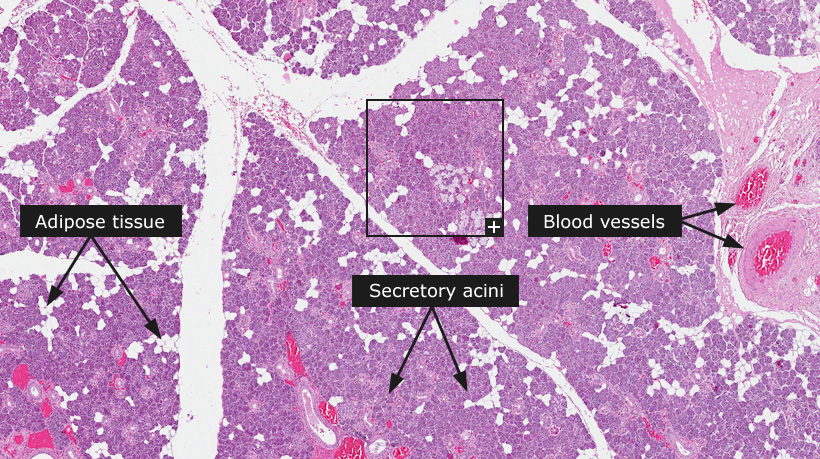DictionarySalivary glandSalivary gland
Salivary glandThe major salivary glands are the paired parotid, sublingual and submandibular glands. They produce saliva, a mixture of serous and mucinous secretions that chiefly contains water, proteins, glycoproteins and electrolytes, and is secreted into the oral cavity. Saliva is rich in enzymes that initiate the breakdown of food and lubricates ingested food to facilitate swallowing. Connective tissue capsules surrounds the salivary glands. Septa from the capsule divide the gland into lobes and lobules and also carry larger arteries and veins. The salivary glands are compound tubuloacinar glands, which means they have branched ducts ending in sac-like dilations (acini) where the excretory cells are located. The secretory unit of the salivary gland consists of an acinus, intercalated duct, striated duct and excretory duct. The acini can be of serous, mucous or mixed type. The serous acini secrete a fluid that is rich in proteins. The cells of the acini are triangular in shape and appear darkly stained with HE. The basal portion of the glands appear darker stained due of the presence of rough endoplasmic reticulum and the round basally located nuclei in the cells. The apical portion stains lighter due the presence of secretory granules. Mucous acini can easily be distinguished from serous acini, as the cells of the mucous acini are paler and contain flattened nuclei located towards the base of these cells. Intercalated ducts, with low cuboidal epithelium, lead away from the acini. In serous secreting glands these small ducts are more evident and secrete bicarbonate and absorb chloride ion from the acinar secretions. Striated ducts connect the intercalated ducts with the larger excretory ducts. They are lined with simple cuboidal or simple columnar epithelium, depending on the size of the duct. They are termed striated ducts because the basal plasma membrane folds into the lower portion of the cell, resulting in a striated appearance. The nuclei are spherical and located to the middle of the cell. Excretory ducts are located in the interlobular and interlobar connective tissue. As the diameter of the ducts increase, the epithelium changes from simple cuboidal to pseudostratified columnar or stratified cuboidal. Excretory ducts eventually open into the oral cavity. Within the salivary glands there are also aggregations of adipocytes. Fat is stored in adipocytes as a single large lipid droplet. In routine embedding of histological specimens the lipid is dissolved, leaving a large unstained and empty appearing space within each adipocyte. The nucleus is flattened and displaced by the lipid droplet to the periphery of the cell.
Cancer: Head and neck cancer |